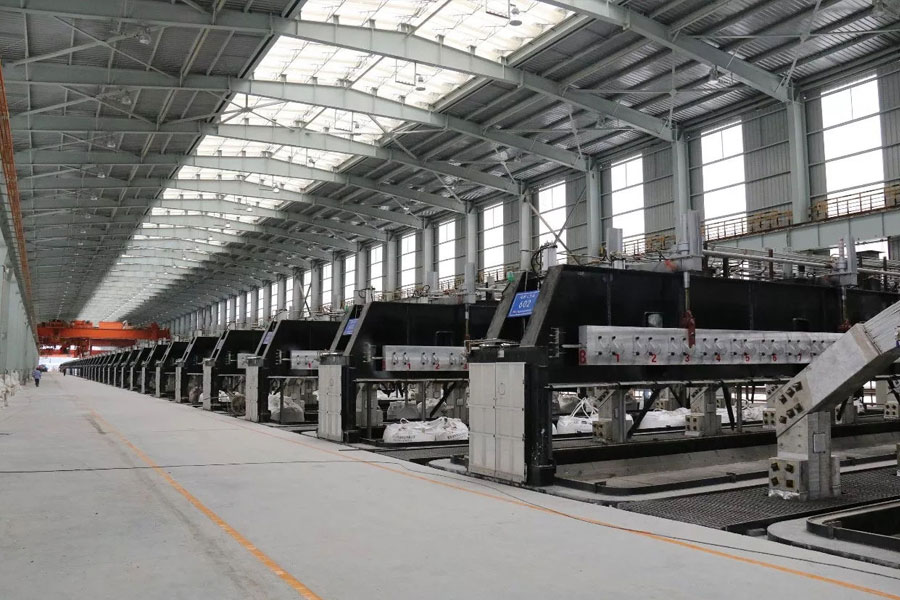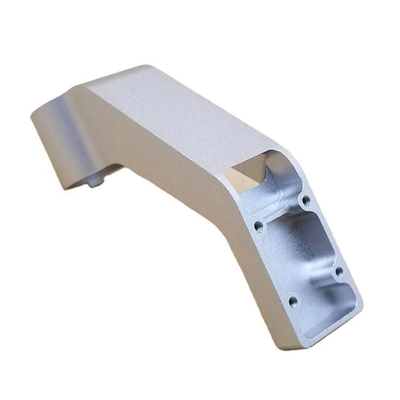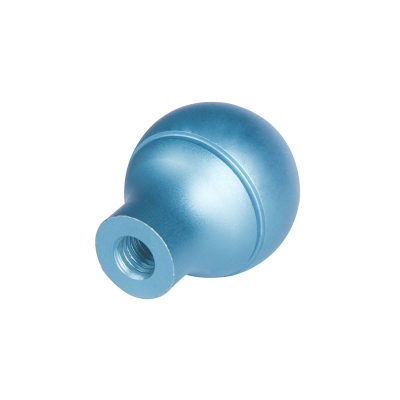The Utilization Technology Analysis Of Secondary Aluminum Ash In Electrolytic Aluminum
The secondary aluminum ash of electrolytic aluminum is a hazardous waste containing a large amount of toxic and hazardous substances such as fluoride, cyanide, aluminum carbide dies, and aluminum nitride, and its treatment has always been a research focus in the electrolytic aluminum industry.
The traditional landfill and storage methods have been banned. For the treatment of secondary aluminum ash, a number of process technologies have been developed in the industry. This article conducts an in-depth analysis of the existing process technology and disposal projects of secondary aluminum ash. The development trend of secondary aluminum ash treatment technology is analyzed.
Aluminum ash is the ash slag that electrolytic aluminum or secondary aluminum floats on the surface of the molten aluminum in the melting and casting furnace. It is mainly composed of infusible inclusions in the molten aluminum, clarifiers, and alumina generated by the oxidation of the molten aluminum. It has heat preservation and prevention of aluminum. The role of liquid oxidation.
The ash slag is regularly picked up during the casting process, which is called primary aluminum ash. The content of metallic aluminum in the primary aluminum ash is 70-80%. Usually, the metal aluminum in the aluminum ash is recovered by methods such as frying ash or pressing, and the ash is further cooled after cooling. The aluminum particles are sieved by fine grinding, and the fine ash obtained is the secondary aluminum ash.

Secondary aluminum ash will cause serious harm to the environment
The chemical composition of the secondary aluminum ash produced by the melting and casting process of different raw materials is different. The secondary aluminum ash produced by the electrolytic aluminum melting and casting process contains high content of fluoride and aluminum nitride, and the secondary aluminum ash produced by the secondary aluminum melting and casting process contains alumina and salt. The content is higher.
The main components of secondary aluminum ash are aluminum oxide, AlN, Al4C3, a small amount of metallic aluminum and a certain amount of fluoride, cyanide, NaCl, KCl and SiO2, and toxic and harmful substances are AlN, Al4C3, fluoride and cyanide.
AlN and Al4C3 produce NH3 and CH4 when in contact with water, and emit a foul smell. The fluoride and cyanide dissolved in water will pollute the natural water body. Therefore, if they are directly landfilled without treatment, they will cause serious damage to the environment. At present, secondary aluminum ash has been included in the "National Hazardous Waste List", the waste category is HW48 non-ferrous metal smelting, and the waste code is 321-224-48.
The existing secondary aluminum ash process has the disadvantage of insufficient consumption
The current treatment process of secondary aluminum ash is mainly divided into two types: harmlessness and resource utilization. Harmlessness refers to the treatment of secondary aluminum ash to remove nitride, fluoride, salt and other impurities to obtain harmless aluminum ash for safe landfill. , The harmless process is mainly acid leaching, alkaline leaching, washing and other methods.
Recycling means that after removing toxic and harmful substances, the secondary aluminum ash is processed by high temperature or cold processing to produce different products such as steel claw protection ring, brown corundum abrasive, refining agent and water purifying agent, etc., or return to the electrolytic cell as the electrolytic aluminum raw material .
Under the pressure of environmental protection, many domestic electrolytic aluminum plants have launched secondary aluminum ash treatment projects. For example, the electrolytic aluminum waste carbon slag and secondary aluminum ash disposal line of an electrolytic aluminum enterprise in Qinghai passed the Qinghai Province Environmental Protection in April 2018 Acceptance of the hall and put it into use.
The total investment of the project is 130 million yuan, and the scale of the project is to dispose of 19,000 tons of waste aluminum ash, 14,000 tons of waste carbon slag, annual output of 10,000 tons of electrolyte, 5,000 tons of remelted aluminum ingots, and 2.96 million steel claw protection rings. 28,000 tons of metallurgical coke and 4,200 tons of artificial graphite crushed.
The process of producing anode protection ring with aluminum ash is:
- 1. The primary selection and crushing of aluminum ash, the waste aluminum ash is fed into the bar screen, and large aluminum blocks are screened out, and the under-screen material is fed into the jaw crusher for crushing, and the crushed material enters the collecting hopper;
- 2. Ball milling and sieving. The crushed materials are fed into the ball mill. After the ball milling, the materials are fed into the vibrating screen through the feeder to screen out the aluminum flakes and secondary aluminum ash that cannot be ground;
- 3. Aluminum block is remelted, and the sieved metal aluminum block is smelted and cast into an aluminum ingot in a 1t intermediate frequency furnace;
- 4. Press the protective ring, the secondary aluminum ash, carbon additive and water are fully stirred and mixed, the mixed material enters the ring machine to directly press the anode protective ring, and the formed protective ring is sent to the electric tunnel kiln for drying;
- 5. Ammonia recovery. Because the secondary aluminum ash contains aluminum nitride, ammonia will be generated during the drying process. The exhaust gas produced by the tunnel kiln is absorbed by the ammonia absorption tower, and the dilute ammonia is pumped into the ammonia distillation tower to make the dilute ammonia partially gas. Chemical condensation to obtain more than 20% of the finished ammonia water for sale.
Returning to the electrolytic cell to smelt aluminum is the development trend of the comprehensive utilization of secondary aluminum ash
Due to the huge output of secondary aluminum ash, the current annual output of secondary aluminum ash alone in the country’s electrolytic aluminum enterprises has reached 2 million tons. Whether it is using aluminum ash to produce steel claw protection rings or brown corundum abrasives, they are facing product consumption problems. Therefore, how to solve how to consume a large amount of secondary aluminum ash has become the focus of attention of enterprises.
The research team of Central South University has developed a low-temperature alkaline fusion technology to treat secondary aluminum ash, which is used as a raw material for electrolytic aluminum and water glass.
The technical principle is to add aluminum ash into sodium carbonate and sodium hydroxide as the smelting medium, and smelt at a temperature lower than 900℃. After the smelting is completed, hot water leaching is carried out, and the separation of the components is completed by step-by-step precipitation; aluminum carbide in the aluminum ash , Aluminum nitride and cyanide decompose, fluoride, chloride and alkaline substances react to form sodium fluoride and sodium chloride, and aluminum oxide and silicon oxide form sodium chlorate and sodium silicate. Adjust the pH value after immersion in water. The aluminum hydroxide and water glass are precipitated in the first step, and the remaining solution evaporates to produce industrial salt in multiple effects, and the aluminum hydroxide is calcined and returned to the electrolytic cell for reuse.
The whole process is low-temperature, energy-saving, clean and high-efficiency, and truly achieves the comprehensive utilization of resources, which has become the development trend of secondary aluminum ash utilization technology.
Conclusion
With the increasing pressure on environmental protection, electrolytic aluminum aluminum ash has become an urgent problem for electrolytic aluminum plants, and the market space is gradually expanding. The application of secondary aluminum ash At present, a variety of technologies have been developed, such as the production of steel claw protection rings, abrasives, refractory materials, etc., but they all face the problem of product consumption. The use of secondary aluminum ash to return to the electrolytic cell for aluminum smelting has become the development of its utilization. trend.
Link to this article: The Utilization Technology Analysis Of Secondary Aluminum Ash In Electrolytic Aluminum
Reprint Statement: If there are no special instructions, all articles on this site are original. Please indicate the source for reprinting:https://www.cncmachiningptj.com/,thanks!
 3, 4 and 5-axis precision CNC machining services for aluminum machining, beryllium, carbon steel, magnesium, titanium machining, Inconel, platinum, superalloy, acetal, polycarbonate, fiberglass, graphite and wood. Capable of machining parts up to 98 in. turning dia. and +/-0.001 in. straightness tolerance. Processes include milling, turning, drilling, boring, threading, tapping, forming, knurling, counterboring, countersinking, reaming and laser cutting. Secondary services such as assembly, centerless grinding, heat treating, plating and welding. Prototype and low to high volume production offered with maximum 50,000 units. Suitable for fluid power, pneumatics, hydraulics and valve applications. Serves the aerospace, aircraft, military, medical and defense industries.PTJ will strategize with you to provide the most cost-effective services to help you reach your target,Welcome to Contact us ( sales@pintejin.com ) directly for your new project.
3, 4 and 5-axis precision CNC machining services for aluminum machining, beryllium, carbon steel, magnesium, titanium machining, Inconel, platinum, superalloy, acetal, polycarbonate, fiberglass, graphite and wood. Capable of machining parts up to 98 in. turning dia. and +/-0.001 in. straightness tolerance. Processes include milling, turning, drilling, boring, threading, tapping, forming, knurling, counterboring, countersinking, reaming and laser cutting. Secondary services such as assembly, centerless grinding, heat treating, plating and welding. Prototype and low to high volume production offered with maximum 50,000 units. Suitable for fluid power, pneumatics, hydraulics and valve applications. Serves the aerospace, aircraft, military, medical and defense industries.PTJ will strategize with you to provide the most cost-effective services to help you reach your target,Welcome to Contact us ( sales@pintejin.com ) directly for your new project.

- 5 Axis Machining
- Cnc Milling
- Cnc Turning
- Machining Industries
- Machining Process
- Surface Treatment
- Metal Machining
- Plastic Machining
- Powder Metallurgy Mold
- Die Casting
- Parts Gallery
- Auto Metal Parts
- Machinery Parts
- LED Heatsink
- Building Parts
- Mobile Parts
- Medical Parts
- Electronic Parts
- Tailored Machining
- Bicycle Parts
- Aluminum Machining
- Titanium Machining
- Stainless Steel Machining
- Copper Machining
- Brass Machining
- Super Alloy Machining
- Peek Machining
- UHMW Machining
- Unilate Machining
- PA6 Machining
- PPS Machining
- Teflon Machining
- Inconel Machining
- Tool Steel Machining
- More Material





